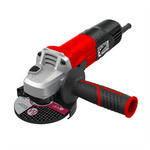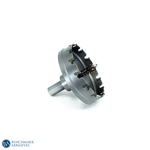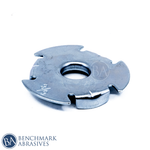
How To Cut Tile Using Common Tools

Trying to fit tile around a toilet flange, a curved shower pan, or a simple corner? Stop worrying about expensive rentals. Knowing how to safely and precisely cut tile is the final skill needed to complete any professional-looking installation.
This guide explores the six most common, accessible tools used to cut tile, helping you match the right method to the material, whether you’re dealing with brittle ceramic, ultra-hard porcelain, or natural stone, for perfect results every time.
Getting Ready To Cut Tile Yourself: Safety and Selection
Before making any cuts, a systematic approach is essential. Most tile cutting involves measuring and marking the tile, scoring or cutting, and then rounding the edges.
The Right Tool for the Material
The hardness of the material you're working with determines your tool selection:
| Material | Best for Straight Cuts | Best for Curved/Odd Cuts |
|
Ceramic |
Snap / Glass Cutter | Tile Nippers / Dremel |
| Porcelain | Wet Saw (Diamond Blade) | Angle Grinder (Notched Blade) |
| Natural Stone (Marble, Slate) | Wet Saw (Serrated Blade) | Angle Grinder (Serrated Blade) |
| Glass | Wet Saw / Glass Cutter | Angle Grinder |
Essential Safety Checklist
The fine dust created by cutting tiles, especially from cement-based materials, is a serious health risk.
- Always wear safety gear: This must include safety glasses and hearing protection.
- Use an N95 or Better Respirator: The microscopic silica dust (or crystalline silica) produced by cutting is a respiratory hazard. A standard paper dust mask is inadequate; always use an N95-rated respirator or better to filter these fine particles, which can lead to permanent respiratory issues.
- Work Outdoors if Possible: If you must operate indoors, use plastic sheeting to cover exposed surfaces, vents, and doors to keep dust contained. Have a vacuum on hand for immediate cleanup.
- Practice First: Use scrap tiles to test the tool and material before working on your current pieces.
- Apply Less Pressure: Avoid using excessive force, which can damage the workpiece or even break the tool.
Ways To Cut Tile Using Common Cutting Tools
Each type of tile-cutting tool uses a similar fundamental procedure, although each has different techniques. Detailed instructions for each tool's use are provided below to assist you in selecting the appropriate tools for your project and utilizing them correctly.
1. Cutting tile with a glass cutter
A hand tool with a rotating wheel, called a glass cutter, is suitable for simple cutting jobs with straight lines. It would help if you did not use it on curves or corners. However, you can use it to cut ceramic or glass tiles smoothly without chipping. To operate a glass cutter, adhere to the steps listed below. In addition, you'll require a wire hanger, a ruler, a pencil, and an aluminum oxide rubbing stone or sanding sponge.
- To determine where to cut the tile, measure it with your ruler.
- Draw a cut guideline on the tile's glazed side with your ruler and pencil.
- Place the tile on a flat surface with the ruler parallel to your guideline.
- Firmly press the glass cutter into the line to score but not cut through.
- Place the wire hanger over the scored line in a horizontal position.
- The tile can be cut using tile nippers or softly snapped by applying pressure to both sides.
- Use a rubbing stone or sanding sponge to round out any sharp edges.
2. Utilizing a Snap Cutter Or Manual Tile Cutter
Alternatives to power tools that can safely and affordably cut ceramic or porcelain tiles without energy or water include manual tile and snap cutters. They can create angled or diagonal cuts, making them suitable for small projects with minimal cuts. They don't work well for tiles over three-eighths of an inch thick and won't cut curves or angles.
Follow the steps below to learn how to use a tile snap cutter. A pencil and an aluminum oxide rubbing stone are also required.
- Measure your tile, then draw the area you want to cut with a pencil.
- Place the cutter parallel to you and facing you, with the lever facing you.
- Place the tile with the glazed side up between the blade rails and tightly against the end stop.
- Place your tile's guideline over the cutter's center guideline.
- Push the lever over the guideline to score the tile surface until it hits the end stop.
- Over the cutting wheel, lower the breaker bar.
- Applying light but firm pressure to the lever will cause the tile to snap.
- With your rubbing stone, smooth out any sharp edges.
3. Cutting tile with an Angle Grinder
An angle grinder is an effective handheld power tool for making round, square, L-shaped, and curved cuts around entrances, vents, drains, and pipes. Although it can't handle large amounts of tile, it is easier to set up and use than a wet saw. For cutting ceramic or glass tiles, use a blade with a diamond tip; for cutting porcelain, a notched blade; and for cutting marble or stone, a serrated blade.
To use an angle grinder, follow these steps. When cutting straight, hold the blade vertically; when cutting rounded, hold it horizontally. A pencil, clamp, masking tape, aluminum oxide rubbing stone, and sandpaper are also required.
- Measure the tile and use a pencil to mark the desired cut form.
- To prevent chipping, tape the tile's edge and clamp it to your work surface.
- Pulling the angle grinder slowly along your defined guideline will score the tile.
- Score the tile once more on the back for rectangular cuts.
- Cut the tile in successively deeper passes until you completely penetrate it.
- Use a rubbing stone, sandpaper, or the flat side of the blade to round off the edges.
4. Using a Wet Saw to Cut Tiles
A wet saw is a power tool that swiftly and precisely cuts huge quantities of ceramic, porcelain, glass, or marble tile using a water-cooled diamond blade. A pump sprays water over the blade to keep it cool and reduce dust as tile is fed into it on a sliding table. Make cuts only when the water flows well over the blade and is sharp.
Set it up somewhere where water won't be an issue because a wet saw can be messy. Keep your hands as far away from the blade as possible, wear protective goggles and gloves, and avoid loose clothing and jewelry. Before beginning, make sure to read all of the wet saw's F&Qs. Then, use these procedures to cut your materials. A pencil and an aluminum oxide rubbing stone are also required.
- Fill the water tray or reservoir, then position the saw on a stable, level platform.
- To create a cut, measure and mark a guideline on your tile.
- Place the tile in water after tapping the tile's edges to prevent chipping.
- Establish the rip fence. This tile portion needs to remain between the fence and the blade.
- Set the tile guideline and blade in alignment to support the tile as it rests on the table.
- Start the saw and wait 20 seconds for the water to flow before cutting anything.
- With the glazed side facing you, guide the tile along the fence and into the blade.
- Until the tile reaches the blade, push it between the fence and the blade.
- Before removing the tile, turn off the saw and let it rest.
- Use rubbing stone or sandpaper to smooth any rough edges if necessary.
5. Using Tile Nippers
Tile nippers, also known as nibbling tools, may produce tiny cuts that larger tools cannot. This is suitable for tiny cutouts, curves, arcs, circles, and other irregular shapes. Ceramic tiles, thinner porcelain or stone materials, faucet valves, door cases, and other obstructions can all be cut with nippers. However, you cannot use them for substantial, straight cuts.
- To use tile nippers, follow these steps. A pencil, measuring implements, and sandpaper are required.
- Where you wish to cut, measure, and mark your tile with a pencil.
- If you need to get your tile close to the cut area, use a snap cutter or wet saw to cut it down.
- Squeezing the nippers firmly but carefully will break the tile into small pieces.
- Use a rubbing stone or sandpaper to round the tile's edges.
6. Use a Dremel to cut the tiles
To make a hole in the middle of a tile for pipes or valve fixtures, use a Dremel. You can drill a hole into either a fixed tile already affixed to a wall or floor, or a loose tile that has not yet been installed. Dremels work best for cutting ceramic tile, although they can also cut through marble or porcelain with a diamond bit.
Follow these steps to use a Dremel to make a hole in a tile.
- The tile where you wish to cut should be measured and marked.
- To keep the tile in place during cutting, clamp it to a sturdy surface.
- Push into the tile with the Dremel at a 45-degree angle until it forms a 90-degree angle.
- When you reach the end of your cut line, gently remove the Dremel.
Guidelines For Cutting Tile Without Chipping
To make clean cuts, minimize chipping, and maximize your chances of success:
- Tape the Line: Tap a piece of masking tape along the guideline mark. This helps prevent the glaze from chipping and makes the line easier to follow.
- Score First (The Notch System): For all tools, start by making a very light, shallow pass (scoring). This initial groove prevents the blade or wheel from wandering and establishes a weak point where the tile is less likely to chip.
- Cut Slowly and Evenly: The most effective cuts are shallow, made with even pressure throughout the entire process.
- Finish Smoothing: Always use a rubbing stone, sanding block, or sandpaper (often 80-120 grit) to smooth any sharp, rough, or chipped edges after cutting.
CONCLUSION
Mastering these six common tools gives you the confidence to tackle any tiling project, no matter the material or complexity. Always prioritize your safety, match the tool to the tile material, and your final, smooth results will be the reward. Now you're ready to lay that last piece and finish your floor, kitchen, or bathroom like a professional.



































































